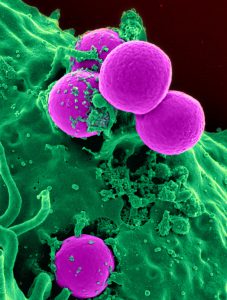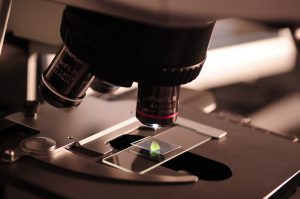Stem cell research has been a controversial issue between politicians, scientists, and religious groups since the 1990s. There are two primary stem cell research types: adult stem cells, and embryonic stem cells.

Stem cells have the ability to turn into necessary cells and re-populate different cells in our body. This means that when we have damaged tissues, stem cells will divide and create new cells to repair the damaged/dead cells. Stem cells can aid in the treatment of cancer, diabetes, heart disease, Alzheimer’s, and so much more. This all sounds great, however, there are some negatives. There are many issues surrounding stem cell usage from lab-fertilized human eggs and creating human tissues in a lab. The U.S. prohibits embryonic creation for research purposes unless they are “leftovers” from a fertility clinic with donor consent. So far, scientists have only been able to test on mice or a petri-dish.
Where Do Stem Cells Come From?
Stem cells can be taken a few different ways. They can be taken from an adult’s tissues, an embryo that is just a few days old (which destroys the embryo), or from the umbilical cord blood when a baby is born. In order to collect stem cells from an embryo, the embryo must be grown in a culture and harvested. After several months, the stem cells are mature enough to use. In the cases involving embryonic destruction, this has caused an uproar among people who believe that an embryo is the start of human life.
The stem cells taken from adults are taken from bone marrow, blood vessels, skin, liver, brain, and more. In 2006, scientists learned how to take a patient’s cells and stimulate them into acting as embryonic stem cells for regenerative purposes; these are called induced pluripotent stem cells (iPS cells).
Stem cells that are taken from the cord blood occur after a baby is born and the umbilical cord is cut. The blood is taken through a syringe, or hung up allowing the blood to flow into a bag. The blood can be donated to a public bank, or stored in a private bank with costs.
The Pros
Stem cells help scientists understand how organisms develop from a single cell and have so many advantages. Stem cells can treat cancer, heart disease, diabetes, and other ailments. Cancer and other disabilities happen because cells divide abnormally, but studying stem cells can help scientists figure out how the disease happens, and treatment

options. For example, a scientist can grow cells from the pluripotent cells to resemble cancer cells, then these cells can be used to test anti-cancer drugs.
- The stem cell’s regenerative and replication rate abilities can cure diseases, even mental health ones.
- Stem cell research gives scientists the potential to learn about human growth and cell development.
- Adult stem cells have low rejection rates because they are taken from the individual needing the treatment.
- Embryonic treatment may be possible. Studying embryonic stem cells leads to a better understanding of how embryos and their defects develop. This will lead to treatments of these genetic defects and conditions, or even putting a stop to them before they start
The Cons
As stated, one main negative of stem cell research is the ethical issues revolving around the use and destruction of an embryo. Human cloning is also raised as an ethical issue since scientists would be taking human cells and reproducing them. Other negatives are:
- Embryonic stem cells have high rejection rates, and some research even shows the development of tumors from them.
- Adult stem cells are generally obtained from the person’s bone marrow. This is an extremely painful process.
- There is no known knowledge of long term side effects.
- The cost for individuals to have stem cells taken from them can be expensive costing thousands of dollars.
The Law
So can you use stem cells or not? Yes, and no. Many stem cells have only been in clinical trials, and mainly on mice.

Somatic stem cells, which are the stem cells taken from bone marrow, are currently the only stem cells commonly used to treat patients with cancer and disorders of the blood and immune system. The only FDA approved stem cell use is multiple cord blood products. Cord blood is found in the placenta and umbilical cord after childbirth. The parents have the option to store the stem cells from the cord, which can be used for their children later on in life.
As far as the research goes, in 2001 President Bush limited funding to a study of 70 human embryonic stem cell lines, which slowed the destruction of human embryos. In 2009, President Obama overturned the policy to expand the number of stem cell lines. Scientists cannot create embryos for research purposes, but they can receive the leftovers from fertility clinics, (with donor consent) and they can use them.
Stem cell clinics are located all across the U.S. and are operating outside of the FDA regulations. There are 570 clinics to be exact. These clinics use stem cells for orthopedic relief, but the FDA warns people because it may be dangerous.
There are many pros and cons to stem cell research. One thing is undeniable, the use of stem cells can help treat cancers, heart disease, and more with their regenerating properties. It can repair tissues and multiply, but it must be further tested. The research allows scientists to understand how human life works, study genetic traits, and how to treat them. Tissue regeneration can help a person who needs a new kidney rather than waiting for a transplant. The possibilities are endless, but the issues surrounding human cloning and destroying an embryo stand strong. Only time will tell what happens from here. Hopefully, the future is filled with further testing that will bring solutions to incurable diseases.